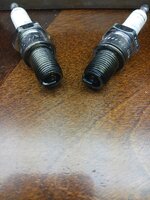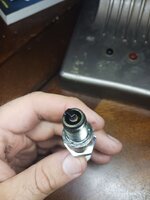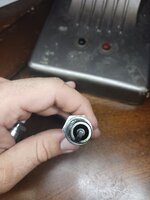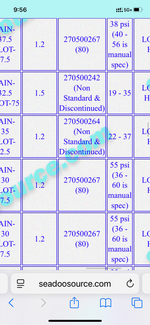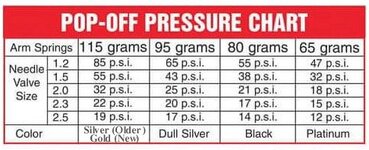I went ahead and replaced the y fitting today. Pressure tested the carbs again with all the hoses in place (except the return). Pressure held fine.
Ski was hard to start on the trailer today. I probably cranked it for a solid minute or two, in 30 second intervals. Some of that time may have been getting fuel into the mostly dry carbs. Took the old plugs out and put paper towels over the head and spun it over to see if fuel was coming through. Towels had a small amount of gas on them, so it looked like I was getting fuel through. Put in new BR8ES plugs and spark testers so I could visually see spark. Spun it over 3-4 times 30 seconds. Would not start. Was finally able to get it to start by giving no choke and a bit more than 25% throttle. Ran it on the hose for 5 minutes or so while I tried my best to set low idle to 3000rpm.
It started at a pretty low rpm 2500ish then I revved it a couple times and it jumped up and then fell back down to around 3500ish. Thus began my back and forth attempts to adjust the idle. Turned it back out (left) a turn, revved it, then the rpms were too low again 2200ish. Turned it back up a bit (less than a turn), revved it, rpms were too high. Turned it back out a small amount, then I revved it, checked rpm again. Rpm was 3150. Revved it some more, 3200. Turned it back down a tiny amount, revved it under 3000. etc
I don't think I have addressed my issue with difficult starts. It seems that the issue is likely due to fuel delivery when I go to start the ski. Most likely carb-related. Gonna go try and put the ski in the water and then idle around for 30 minutes or so and come back and check plugs @burtshaver2021
Ski was hard to start on the trailer today. I probably cranked it for a solid minute or two, in 30 second intervals. Some of that time may have been getting fuel into the mostly dry carbs. Took the old plugs out and put paper towels over the head and spun it over to see if fuel was coming through. Towels had a small amount of gas on them, so it looked like I was getting fuel through. Put in new BR8ES plugs and spark testers so I could visually see spark. Spun it over 3-4 times 30 seconds. Would not start. Was finally able to get it to start by giving no choke and a bit more than 25% throttle. Ran it on the hose for 5 minutes or so while I tried my best to set low idle to 3000rpm.
It started at a pretty low rpm 2500ish then I revved it a couple times and it jumped up and then fell back down to around 3500ish. Thus began my back and forth attempts to adjust the idle. Turned it back out (left) a turn, revved it, then the rpms were too low again 2200ish. Turned it back up a bit (less than a turn), revved it, rpms were too high. Turned it back out a small amount, then I revved it, checked rpm again. Rpm was 3150. Revved it some more, 3200. Turned it back down a tiny amount, revved it under 3000. etc
I don't think I have addressed my issue with difficult starts. It seems that the issue is likely due to fuel delivery when I go to start the ski. Most likely carb-related. Gonna go try and put the ski in the water and then idle around for 30 minutes or so and come back and check plugs @burtshaver2021




